You’re ready to start creating awesome content to keep your business relevant in these times, and then it happens:
Blank. Nothing.
Ok, maybe not that dramatic.
Perhaps you come up with two or three ideas and can’t go further than that. And even if you have a bunch of ideas, the execution alone makes you feel overwhelmed that you can’t sustain this process. How are you supposed to build a whole content calendar for months and months this way?
Well, it turns out you can build a whole calendar out of only a few ideas
And here you’ll know how to make this happen.
By the way, what you’re about to read is step 5 of a 5-step process I documented in a series of videos on social media.
1. Choose your topic

Getting started is often the most challenging part. This step is all about how your greatest sources of content may be hiding in plain sight.
Imagine you have a 30-minute free consultation opportunity with a potential client. What do you talk about during that session? What sort of value do you provide at this point? A free consultation is typically a change to engage in a sales conversation, hoping it turns that person from potential to actual client.
And what are these conversations usually about? They’re usually about the challenges your client faces and how you can help overcome them. Right there, you have a beautiful, fantastic opportunity to start creating content: focus on one of those challenges. And there you have it; you have your first topic.
Let me give you one example. When I have sales conversations with my potential clients, a challenge that often comes up is “I really don’t know what type of content to share, I have no idea what I could talk about, all I can think of is, well, I’m just gonna promote myself with a please contact me for more information.” That is how I decided on this topic “how to never run out of content to share.”
2. Break it down into small pieces
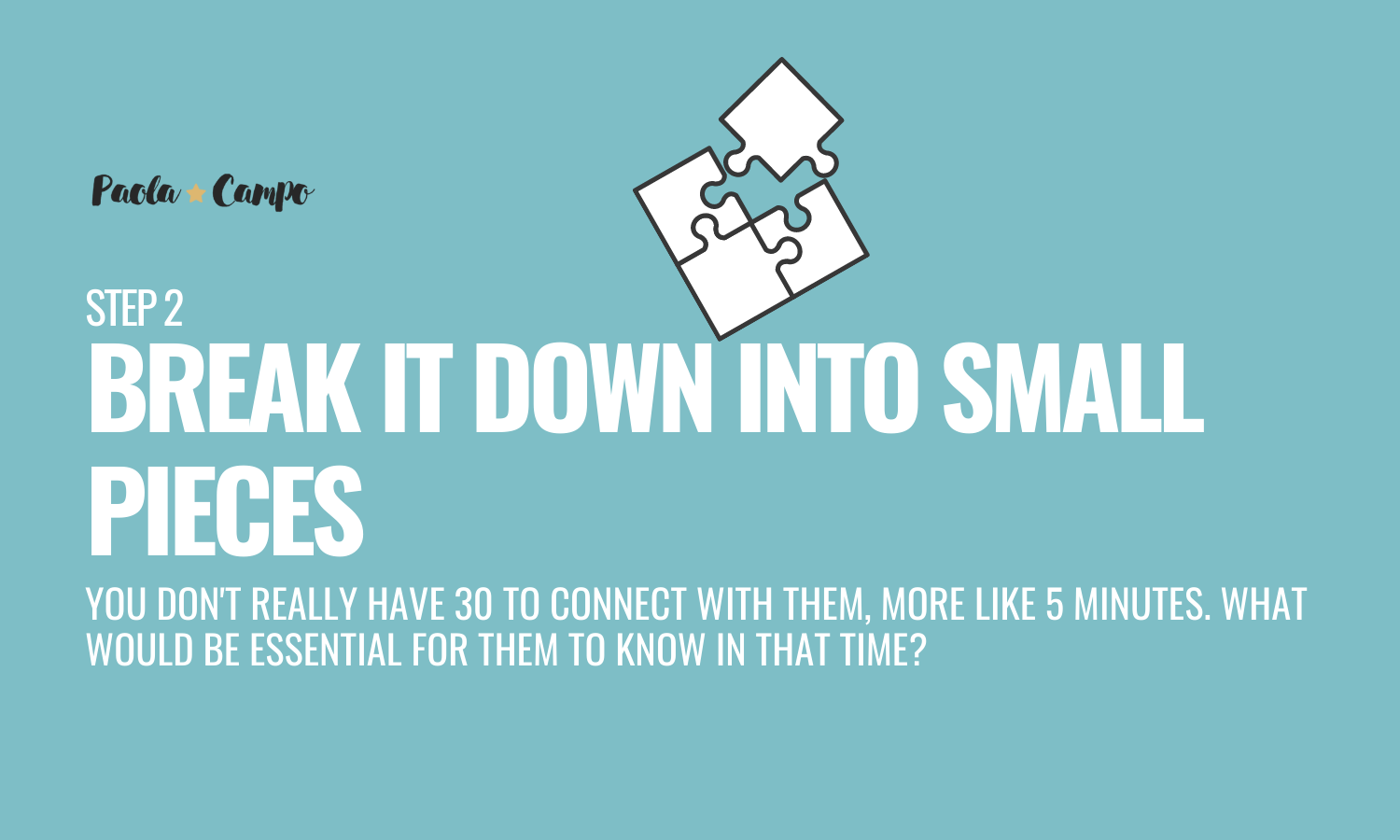
A challenge is simply a problem to solve, a hurdle that you have to overcome. And the other side of the challenge, there is a solution. But of course, here’s the deal. Solutions don’t just happen. Most of the time, with challenges, there will be something in between.
Sometimes the solution comes after following a process, a series of steps, or even a checklist. When you have identified that particular challenge, think about all the efforts you have to go through to overcome the challenge. Think about it like a process that goes “first, second, third” and gets you to the solution. Maybe it’s more like following a guideline, a checklist, or a bullet-point list.
At this point, you have a challenge, and the individual steps required to get to the solution. And now, those individual components to an outcome are a bunch of pieces of content that you can share with your potential clients. So let’s continue with the same example.
As I mentioned before, not really sure what sort of content to share is a particularly big challenge to my clients, and most importantly, they don’t know how to keep the effort running. Thinking about the process that goes from not having anything to have a bunch of content to share, I identified five steps, like this:
The first step is choosing a topic out of the typical challenges I discuss with clients. The next one is to break down the challenge into smaller pieces until you reach the solution. You then choose the right format to spread that content and then communicating the content via various channels. And finally, you consolidate it into a bigger piece of content to create more visibility.
Each one of those steps is a piece of content on its own.
3. Choose the right format
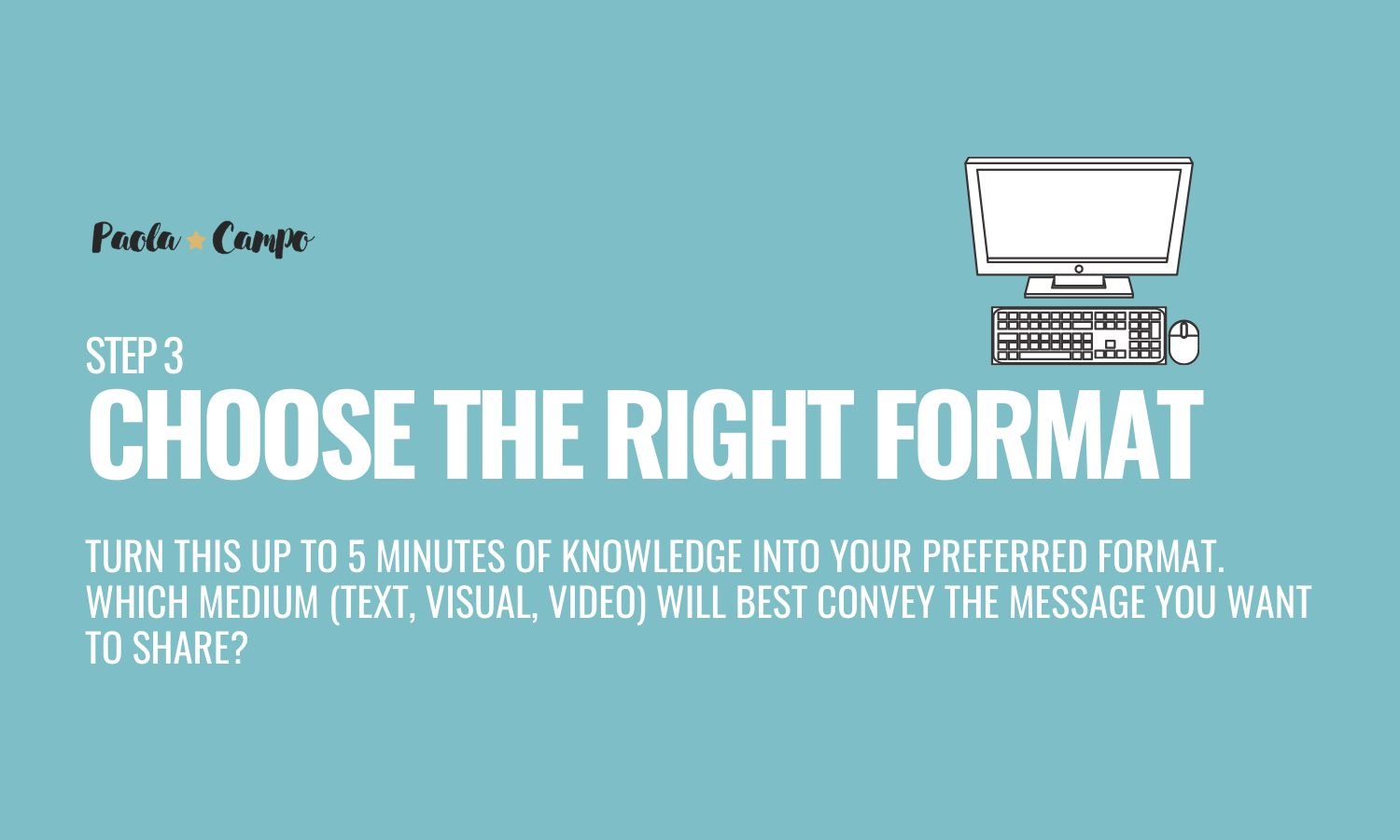
Now you get to the part where you get down to the business of creating content! But how should you approach this task?
Choosing the right format or medium for you to share your content will depend on many different factors. First of all, the topic that you’re dealing with will determine the best approach. Another factor is your preference for the formats that make you feel more comfortable (making it easier for you to create). Your audience’s preferences can influence that decision, too.
The most important part of this particular point is keeping your format consistent across specific content related to that one topic. For instance, if you want to focus more on written pieces, like blog posts or email newsletters, then stick to that medium throughout the entire topic.
Of course, later on, you can get creative and switch things around to try different approaches. For this part, stick to the format. Trust me; this will make things a lot easier for content development purposes and save you a lot of time when you reach step five.
Once again, let’s look at this with my previous example. For my topic to never run out of content to share, I chose videos as my medium for several reasons.
- I was comfortable with videos after having tried them in my content strategy some weeks before.
- Videos were an excellent way to deliver a short but concise amount of actionable content without overwhelming the viewer.
- And finally, based on the response I received from previous videos, I knew there was a higher chance for my target audience to respond favorably to these.
But you know, it was always my intention to turn these videos into something else, perhaps something in written format (I said so in my video, and here you are!).
4. Share your pieces every day

Content planning, when you already have many things work with, becomes a lot easier. Add technology to the mix, and you’ll be a true content machine! If we were only about pushing the share button on your social media network of choice, this would be a very short explanation.
This step is more about how you can use technology to your advantage. Your communication channels will depend on where your customers are and the specific platforms where you’re already consistently sharing content. Therefore, social media is one of the usual suspects, including LinkedIn and Facebook, where I post most of my content.
Another good communication channel you can use to spread the word and your content is email marketing. That’s another way that you can also spread the word and your particular content. Sometimes you can even combine the two, do your content on social media, and perhaps even expand a little more and put it on email marketing, as far as your newsletter content.
At this point, technology is going to be your friend. To make the process more efficient for you, you will need to have all the content and the right tools to save time. How do you do that? Every week you sit down and plan your content. When everything is ready, you grab your favorite social media scheduling tool and plan all that content to distribute over that week.
Through this practice, you can sit back, relax, and let everything run. It also frees up time to engage with your audience in the comments.
Most email marketing tools also have this possibility of automation, where you can make sure to plan all emails out in advance. Then you just let them automatically deliver on your selected schedule. There are many tools in the market that you can use to schedule your social media content.
There are many social scheduling tools in the market today. I still enjoy working with a classic, Buffer (I use the original product, Buffer Publish). My email marketing and automation tool of choice is ActiveCampaign, particularly for its workflow capabilities.
Important Note: video scheduling can be tricky. Social media scheduling apps are third-party tools that deliver content to specific social networks without impacting your posts’ reach and engagement. But with video, the downside of these apps is that they tend to use the tool’s own media player instead of that of the native player of the network where they post. That means a person trying to watch the video you posted on LinkedIn, for example, will take them outside of the network to view it. Many social media networks prioritize content that keeps you on that page, so this could potentially impact your video’s reach.
5. Consolidate into a bigger asset
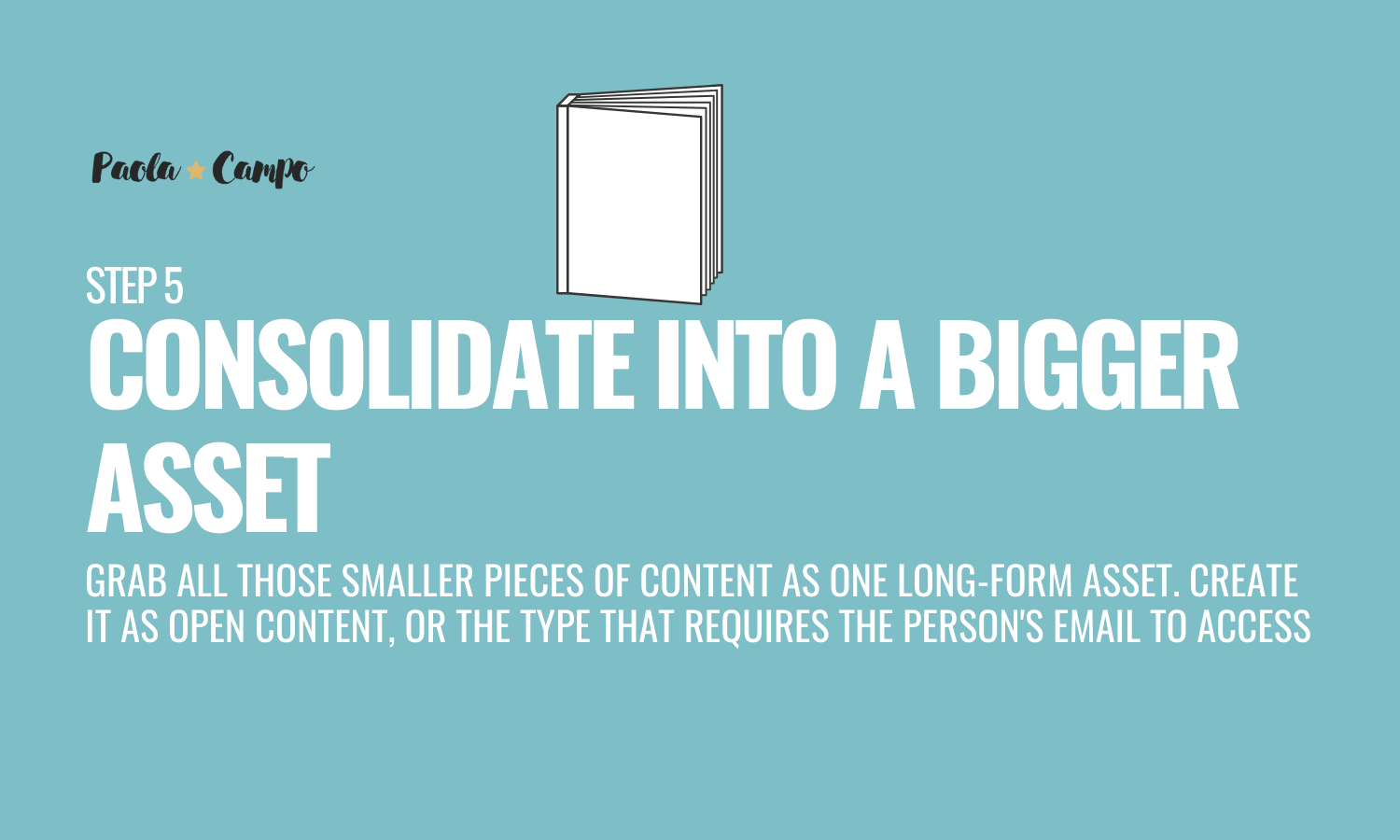
Just because you have shared all your pieces of related content doesn’t mean the work stops there. There’s one more thing you can do for maximum impact!
The final step of the process to never run out of content to share is one of my favorites. You just created this invaluable resource in a lot of small pieces to deliver to your potential clients. Consolidate everything you made, give it a new format and share it differently!
For example, you can create a whole ebook out of this material, a series of checklists, or even a bigger video that you can use on YouTube. There are so many ways to turn everything you have done into an extra piece of content; you can go one step further and offer this new piece of content as something that people can get in exchange for their content details. That way, now you have a whole list of potential new clients you can engage with on a more one to one basis.
You are reading a perfect example of this step in action!
The beauty of this particular method is that you’re going to find yourself never running out of content to share. Firstly, you have many topics that you can choose from based on all these different challenges your previous and potential clients have. And secondly, once you start getting into this particular process, you realize you’ll start getting a whole lot of ideas you never knew you had in you because creativity is like a muscle; the more you exercise it, the better it gets!
I look forward to seeing all that amazing content. I know you’re ready to share with the world!

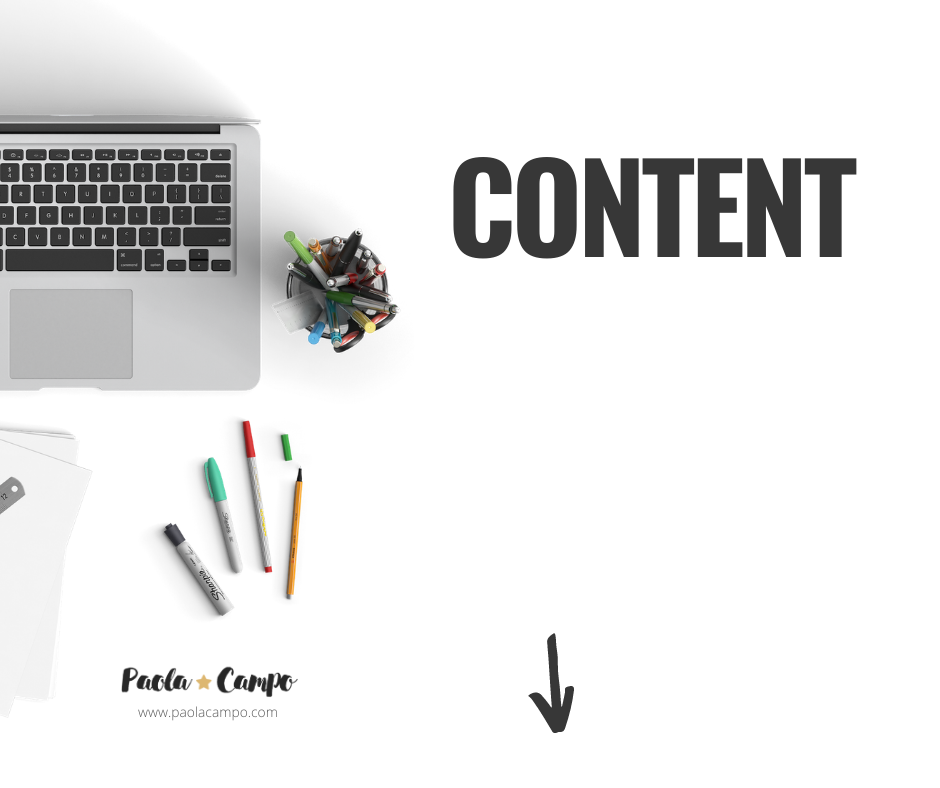



0 Comments
Trackbacks/Pingbacks